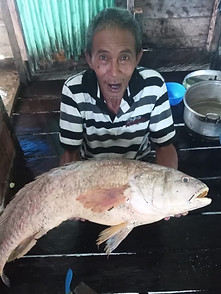Fifty Shades of Maw
Grey literature profiles supply and demand, management gaps, and social implications on the globalisation of fish maw
There is a lack of primary literature on source nations, values, species, trends in frequency of catch; market chains, and socio-economic dynamics of fishers, and how fish maw is influencing their fishing behaviour and livelihoods. However, implication arising from fish maw in source countries are regularly reported in the media. In this project I will conduct a systematic literature review on grey literature around fish maw, and how information in such articles compares to what is said/available in published literature. This will involve information coding and situating information compiled with existing literature. The projects primary output seeks to publish a literature review on characteristics of fish maw trade in low-income source nations and uses in high-income end-use nations. This information will feed into global management initiatives on fish maw including increased attention from the Convention on the International Trade of Endangered Species of Wild Flora and Fauna (CITES).



All photos: Michael Grant
This review study will use a time-series systematic search method of grey literature to examine non-primary literature sources to fill knowledge gaps. Here, we will collate grey literature articles generally relating to fish maw, value, and market. These articles will then be used to code occurrences in the grey literature about the trends in the frequency of reporting on ten themes:
1. Sustainability concern stemming from fish maw (threaten species implication)
2. Increased management concern, action, or policy development (define if international, regional, or national)
3. Growing globalisation of fish maw as a commodity (Awareness; define is International, regional, national)
4. Implicit species
5. Price, with explicit focus on high end fish maw
6. Effect on local fisher livelihood (income)
7. Effect on local fisher behaviour (changes in way they fish)
8. Market chain (who are mentioned as traders between catch and end user market)
9. End user market/ destination
10. End user consumption (uses, values, cultural connotations)
Information collected on these 10 themes will be compared with available primary literature, to fill knowledge gaps and examine common themes.
Liat Dayan, JCU (Lead)
Supervisors:
Dr Andrew Chin, JCU
Michael Grant, JCU
A/Prof. Simon Foale, Dpt. of Anthropology, JCU



